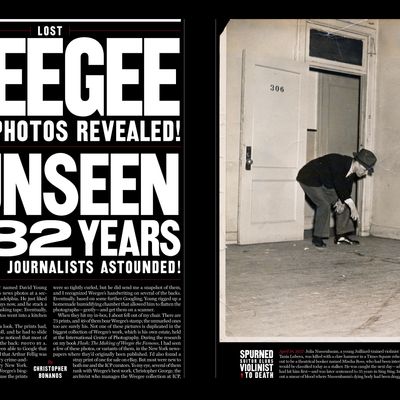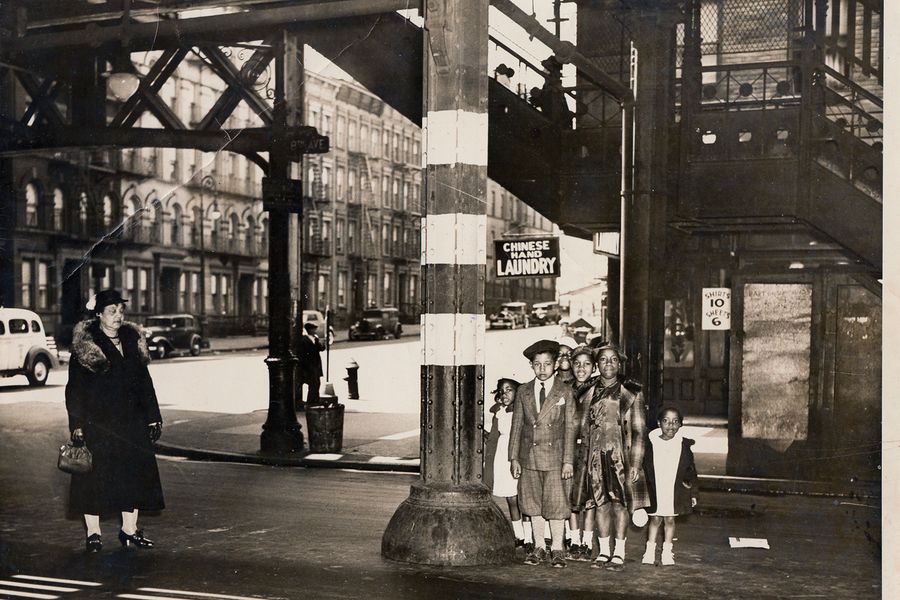
In New York’s May 13–26, 2019 issue, city editor Christopher Bonanos unveils a selection from 73 long-lost images by the mid-century New York crime-photography legend Weegee. The pictures in our pages, unearthed from a junk-store box by the artist David Young, are being published for the first time in 82 years. As our story details, Young bought the photos in 1970 simply because he liked the look of them, and he was unaware of their origins until he pulled the box out of his kitchen cabinet last year and Googled the photographer’s stamp present on many of the images.
For Bonanos, who recently won a National Book Critics Circle award for his biography of Weegee, Flash: The Making of Weegee the Famous, it’s tremendously exciting for something like this to appear after he’s studied the man’s work for so long. Nearly all of the images turned out to have been made in April and May 1937, and there are at least eight murders, murderers, or murder suspects represented among them. Bonanos spent the past few weeks applying his research skills and extensive knowledge of Weegee’s work to identify most of the scenes. Here’s how he pinned one of them down.
This photo was hard to figure. Maybe it was Easter, and everyone was dressed for church?
I started with a weak guess, from the look of the buildings and the el train and the fact that the subjects were African-American, that it was somewhere in Harlem. After a lot of staring, I spotted a street sign, barely legible, toward the upper left of the photo: 8TH AVE. That meant the train was the old Ninth Avenue IRT, which took a curve north of Central Park and shifted to Eighth Avenue. Since there’s a staircase in the photo, that narrowed it down to the train’s eight stations in Harlem. And I started marching south on Google Street View, looking for a landmark, from 155th to 150th to 145th to 140th …
Nothing matched. Too many buildings have been torn down and rebuilt in the past 80 years. But then I had a brainstorm: In 1940, for a citywide property-tax survey, New York City photographed every single building in town. Those pictures went online recently. So I started checking each of those same intersection, and in about 20 minutes I found a photo of 2527 Eighth Avenue that showed the same CHINESE HAND LAUNDRY sign — same building, too, though the ground floor looks different now — and another photo that showed the tenements across the street. So now I had a corner: 135th Street and Eighth Avenue.
Then it hit me. Another photo in the same box of Weegee prints — one that he’d captioned in ink — showed a crashed limousine owned by the actor Stepin Fetchit. I’d looked up the coverage of that crash in the New York Daily News, and the car, it said, had run into an elevated-train pillar at 135th and Eighth. And I know well that Weegee’s signature move was to photograph the observers of a news event in addition to the event itself, and that, on occasion, he was known to give that scene a little help by asking someone to pose as an observer.
It’s pretty clear to me, therefore, what happened here. He went and shot the wrecked car, wherever it had been towed. Then he came back to the site and asked a few neighborhood kids to gawk at the pillar it had hit. As for the woman, maybe she posed there, too, or maybe she just stepped into the scene. What I love most of all is that her baleful glance kind of prefigures the one in The Critic, Weegee’s most famous photo, of two opera ladies arriving on opening night as a disheveled woman rolls her eyes at them. He set that one up, too.
If you like stories like these, consider subscribing to New York.

